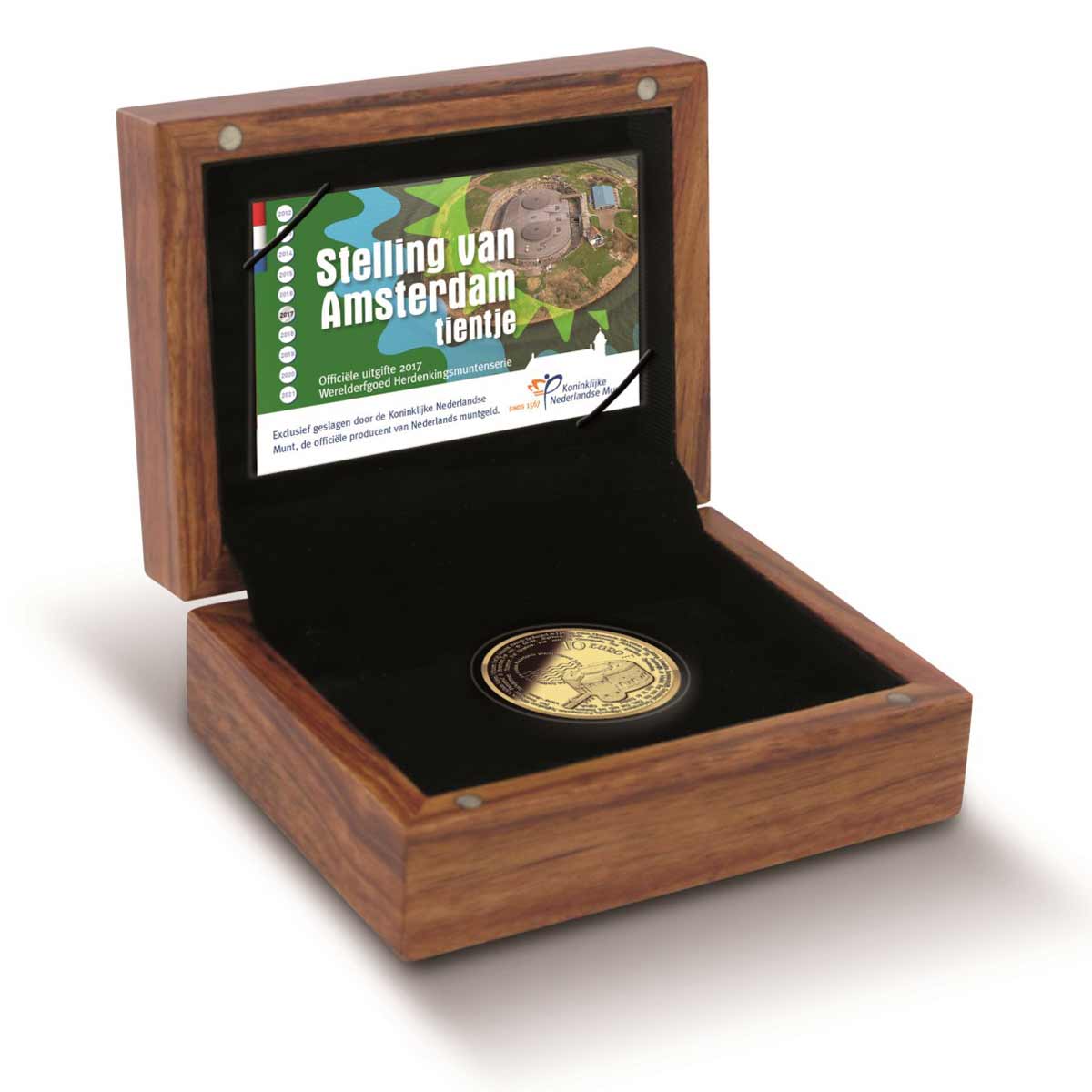Royal Dutch Mint showcases a UNESCO World Heritage Site, the Defence Line of Amsterdam
The Stelling van Amsterdam (Defence Line of Amsterdam) is a complete ring of fortifications extending more than 135 km around the city of Amsterdam and is the only example of a fortification based on the principle of controlling local water bodies. Built between 1883 and 1920, a ring of 45 forts, along with dikes, sluices and canals, was designed to repel and protect against a land invasion by another European power.
Spread apart in a ring, with distances not exceeding 3.5 km between them, the forts used a combination of firepower and selective flooding for defence. It was all for naught however, as the advent of airpower after the First World War made fortifications like these obsolete. Decommissioned in 1963, the fort network never saw combat service. The Nazi forces, using paratroopers and superior forces, conquered the Netherlands in just four days in May 1940, although this was more a failure of the interwar governments attitude to its military strength, rather than a specific failing of the forts.
The Royal Dutch Mint is releasing a new coin range that showcases this fascinating series of fortifications. An image of the key Ossenmarkt fort takes pride of place and it’s surrounded by three rings of inscriptions that list out the others in the network. The denomination is inscribed here, along with a water symbol to represent the complex, and a pair of mintmarks. Inscriptions on the obverse are limited to the issuer and there’s a quite dynamic looking layout of kings effigy and emblem – a nice change from the usual British effigy layout.
Two precious metal variants are available. A half-ounce sterling silver coin with a 5,500 mintage is the primary one. Retailing for €49.95, it comes mounted to an informative gatefold card. The gold coin (90% fineness) is smaller at 6.72 grams, but has basically the same design. Only 1,000 of these €389.95 coins will be minted and they’re supplied in a wooden box. All will ship from 07 December, along with a €12.50 base-metal version with a 15,000 mintage.
MINTS DESCRIPTION
The Defense Line of Amsterdam is a 135 kilometer long defense line that was built between 1880 and 1914. The army, the government and the king could withdraw within this ring in an attack on the Netherlands. The Defense Line consists of 42 forts and a large number of batteries, dikes and locks at a distance of 15 to 20 kilometers from Amsterdam.
With an ingenious system the land around the line could be put under water, which could create a pond, not deep enough for ships and too deep for man and horse. This would make an enemy invasion of the capital impossible. But even before the Defense Line was completed, it was already out of date. The rise of the aeroplane deprived the line of its meaning.
Even though the Defense Line of Amsterdam was brought into a state of defense during the two world wars, there was no need to actually fight on the forts. The Defense Line of Amsterdam was a defense line for an attack of enemies over land. Airplanes were deployed from the first world war, the value of the Defense Line of Amsterdam was drastically reduced. Meanwhile, a large number of forts have been given a new destination.
In honor of this impressive line of defense, the Royal Dutch Mint, commissioned by the Ministry of Finance, issues an official commemorative coin. The Fort on the Ossenmarkt is depicted centrally on the coin. The artist chose this fortification because of the complementary form in relation to the coin. The forts of the Defense Line are mentioned along the edge of the coin. The circle with the names represents the 135-kilometer-long line of defense.
SPECIFICATION
| NAME | 2017 GOLD | 2017 SILVER |
| DENOMINATION | €10 Euro | €5 Euro |
| COMPOSITION | 0.900 gold | 0.925 silver |
| WEIGHT | 6.72 grams | 15.5 grams |
| DIMENSIONS | 22.50 mm | 33.00 mm |
| FINISH | Proof | Proof |
| MODIFICATIONS | None | None |
| MINTAGE | 1,000 | 5,500 |
| BOX / COA | Yes / Yes | Card / Yes |









Leave A Comment